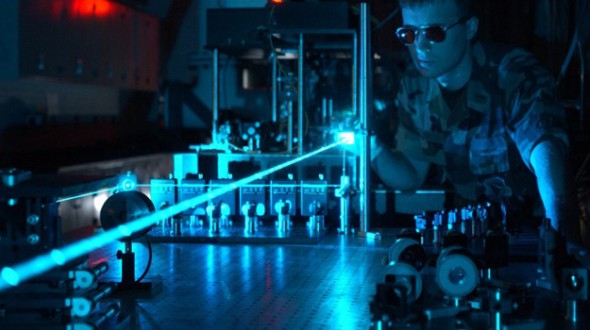A breakthrough has been made in information transmission at the University of Maryland, funded by the U.S. Military and National Science Foundation. The air waveguide is an attempt to create an optical cable in thin air using lasers. They tried recreating the process taking place in optical cables using a high-powered laser split into multiple beams instead of the cables’ total internal reflections.
The idea behind optical cables is keeping the light trapped, forcing it to travel the way we want it to. These cables have air with a refractive index much more different than the glass or plastic surrounding it, so that light moving inside the cable is subject to total internal reflection. But the reality is that these cables are expensive and occupy space. Wireless optical cable was the motivating idea behind the Air Waveguide. The split beams of the high-powered laser they use forms into a tube, reconstructing the outside of the optical cable. The enormous heat the laser lets off super-heats the air in the tube , making it expand. Air rushes to the center of the tube and forms a high-pressure zone, whilst the area between the center and exterior lasers form a low-pressure zone.
Though the project is an ambitious one, it is not, in fact cost-effective, requiring huge amounts of energy to power the components. In theory, the air waveguide is perfectly operational, but there still needs to be a lot of development to be made. The air waveguide would be of great service in space explorations – as long as it’s not in the vacuum of space and analytical equipment &used to gather data from the Moon, Mars, etc) would return cleaner samples. On the other hand, the lasers are subject to the bloom effect, making long-range transmissions faulty and setting up such technology is definitely more expensive than laying down optical cables.
The project does open up paths towards secure, versatile and quick optical transmissions and leaves lots of room for research and development. With the army’s funding, this project is bound to progress and develop new technologies that we will (hopefully) benefit from. Keep an eye out for the University of Maryland team.
 Load the Game Video Games, Reviews, Game News, Game Reviews & Game Video Trailers
Load the Game Video Games, Reviews, Game News, Game Reviews & Game Video Trailers
